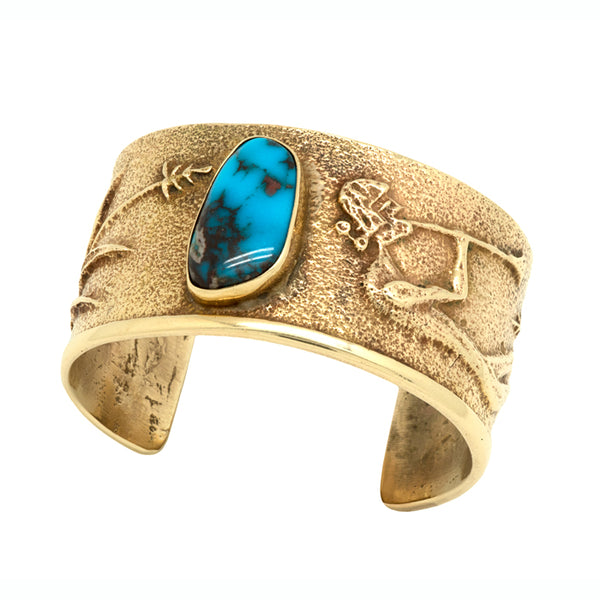Preston Monongye (1927-1987) was an influential proponent of what he called “the new Indian art.” He wrote, “We may use old techniques, along with old designs taken from potsherds or pictographs, but then we redesign them or add innovations of our own.”
Born in East Los Angeles, California, to Mexican and Mission Indian parents, Monongye was adopted by a Hopi family at age seven. He was raised Hopi, speaking the Hopi language and participating in the Katsina Society. By age nine, he was already helping his uncle melt silver coins and pound them into jewelry. “He taught me how to live the ‘Hopi way,'” Monongye recalled. Throughout his career, Hopi colors and images were prominent in Monongye’s work.
But Monongye was adamant that Native jewelry not be bound by the past, explaining, “An old piece of philosophy given to me by my father and other men of the Hopi Mesas is, ‘If you can progress without hurting your tradition or your religion, you should do so.”
Source: amnh.org



